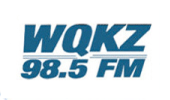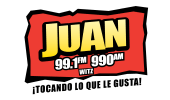Patoka Sportsman 11-12-22
Patoka Sportsman 11-12 & 11-13-22
This is the weekend many hunters have been waiting for. It’s the opening weekend of the deer firearms season. Deer archery season opened on October 1 and continues until January 1, 2023. It can get a little confusing unless you have a lifetime license when it comes to exactly how many deer you can harvest with what type of equipment. I’ve covered this in the past but this is the “big weekend” so I thought I’d go over it again.
A deer firearms license is much like an archery license. A muzzleloader license is not valid during the deer firearms season. A deer firearms license is only valid for the harvest of one antlered deer during the firearms season. Conversely a firearms license is not valid during the deer muzzleloader season.
The deer license bundle is valid for all deer seasons except for the reduction zone season. The deer license bundle allows an individual to harvest up to three deer, two antlerless and one of either sex, with only one license. An antlered deer harvested with the deer license bundle counts toward an individual’s one antlered deer limit for statewide seasons.
The bundle can be used to take a deer with equipment legal during the archery firearms or muzzle loader seasons. Antlerless deer harvested with the deer license bundle must be used toward the bag limit for bonus antlerless deer, archery, or muzzleloader. When used toward the bonus antlerless deer county quota, the county quota applies. The bundle may not be used toward the bag limit for bonus antlerless deer on DNR properties where the bonus antlerless license cannot be used.
Hunters are required to register their harvested deer within 48 hours of the kill. This can be done one of three ways. Online though the DNR’s CheckIN Game system, by calling 800-419-1326 ( a $3 fee applies) or find a check station or license retailer who will enter the information for you through CheckIn Game. Once the deer is registered with the CheckIn Game system, a confirmation number will be generated. The number must be recorded on a temporary transportation tag and kept with the deer until processing begins. The deer head must remain attached to the carcass until the deer is registered with CheckIN Game and a confirmation number is issued.
Each year the DNR sets antlerless deer bag limits in every Indiana county. No county in Indiana has a quota of more than 2.The special antlerless firearms season is closed during the 2022-2023 deer hunting season.
Let’s summarize the deer bag limits to make it a little easier for you to digest. For archery season hunters can harvest 2 antlerless deer or 1 antlered and 1 antlerless deer. For firearms season only one antlered deer. For muzzleloader season you can harvest one antlered deer or one antlerless deer. If you’ve already harvested an antlered deer during a previous season then you cannot shoot another antlered deer during muzzleloader season. For bonus antlerless deer you can harvest one antlerless deer per license not to exceed the bonus antlerless county quota. Bonus deer can be taken during the archery, firearms, and muzzleloader seasons with the appropriate license. You can harvest 3 antlerless deer or 2 antlerless and 1 antlered deer during state park reserved hunts.
Select Indiana state parks will close for four days in the coming weeks to allow for controlled deer management hunts. The dates for the closings are Nov. 14-15, and Nov. 28-29.Locally the properties are: Brown County State Park, Charlestown Sate Park, Fort Harrison State Park, Harmonie State park, Lincoln State park and McCormick’s Creek State park
DNR Fish & Wildlife areas are for everyone. If you’re a person with a disability who wants to hunt on a DNR property, you can apply for a special permit. In particular, if you’re a veteran with a disability, apply for a DAV hunting license. Be sure to contact the property manager to organize entry for each area. If you have questions about accessible properties or hunts near you, contact them.
If you harvest a deer and don’t need the meat you can donate it to the hunters for the hungry program by taking it to Sanders Processing in Celestine or Cannelburg Processing. You must donate the entire deer and you can donate as many legally harvested deer as you like. Processing fees are paid through a Sportsmen’s Benevolence Fund Grant from the Department of Natural Resources. Donated deer will be accepted until the end of the deer season. Everyone who donates a deer or multiple deer will be entered into a drawing to win a firearm donated by Dr. Greg Gordon and Jasper Optical Lab.
Indiana Conservation Officers encourage citizens to partner with the Turn In a Poacher, Inc. (TIP) program and help put an end to poaching. TIP is a nonprofit conservation organization that protects fish and wildlife resources by increasing public support and involvement in bringing violators to justice. A poacher is a thief who illegally steals wildlife that belongs to each Indiana citizen. Indiana DNR manages wildlife for everyone, and every person can help TIP support DNR efforts by reporting potential violations at 1-800-TIP-IDNR (800-847-4367) or tip.IN.gov.
Starting Nov. 13 until the first quarter of 2024, Spring Mill Inn is closing for significant mechanical modernization. The exterior appearance of this historic structure will remain the same, although windows and doors will be replaced. The extent of this work requires closure of lodging rooms, conference facilities, and the Millstone Restaurant through the first quarter of 2024. Camping and all other activities at Spring Mill State Park will still be available.
In addition to the deer firearms season opening this weekend several other hunting seasons have started. Dove is open until Nov. 27. Pheasant (cock only) is open until Dec. 15. Rabbit seasons runs through Feb. 28. Raccoon and Opossum seasons is on through jan. 31. Quail season runs through jan. 10. In the South Zone you can hunt Canada Geese Nov. 5-20 and Nov. 26 – Jan. 22. Trapping for beaver is open until march 15. Mink, Muskrat and Weasel trapping is open Nov. 15 through Jan. 31. Trapping for raccoon and opossum is open through Jan. 31. River otter trapping runs from Nov. 15 – march 15.
Invasive species threaten nearly all Hoosier wildlife habitats. With fall here, the time for foliar herbicide applications (i.e., spraying the herbicide on the leaves) is rapidly fading, as leaves must be green and in the process of photosynthesizing for herbicides to work. As one season of treating invasive species ends, another begins. In fall, there’s plenty of time to treat invasive shrubs like autumn olive, bush honeysuckle, privet, and winter creeper by applying specialty herbicides to stems. Cut-stump and basal-bark applications are especially effective methods that work well in late fall and early winter to kill the roots and prevent resprouting in spring.Interested in finding the best method to control invasive species in your backyard? Contact an invasive species regional specialist, a Pheasants Forever and Quail Forever Farm Bill wildlife biologist, or your local wildlife biologist.
The deadline for submitting Lake and River Enhancement (LARE) applications is Jan. 15, 2023. The LARE program strives to protect and enhance aquatic habitat for fish and wildlife while ensuring the continued usage of Indiana’s publicly accessible lakes, rivers, and streams. This is accomplished through measures that reduce nonpoint sediment and nutrient pollution. Technical and financial assistance for qualifying projects is provided to applicants through the LARE program. Qualifying projects can include logjam removal, streambank stabilization, and wetland creation, to name a few. To view a full list of qualifying project types, along with additional LARE information, see lare.dnr.IN.gov.
Applicants are encouraged to reach out to LARE staff regarding potential projects ahead of the application deadline. To learn more about LARE requirements or to submit a project application for LARE assistance, visit on.IN.gov/lare-manual. Applications should be completed and submitted electronically.
This year, get outside and enjoy Indiana’s natural spaces on Friday, Nov. 25. Admission is free at all Indiana DNR properties, and you can earn the chance to win nearly everything you need for a great picnic from the Indiana Natural Resources Foundation (INRF). The prize package is valued at nearly $360, and registration is simple. You just need to sign up for the INRF e-newsletter to enter. Entries will be accepted through Nov. 26. For more information about #OptOutsideIN2022 and to learn how to win other great prizes, please visit on.IN.gov/optoutside. As the official nonprofit for the Indiana Department of Natural Resources, the INRF celebrates Indiana's natural legacy by raising funds to support DNR and its programs. Through land acquisition, outdoor education, and outdoor recreation efforts, the INRF supports preserving Indiana's public lands forever. You can learn more about the INRF at Indiananrf.org.




